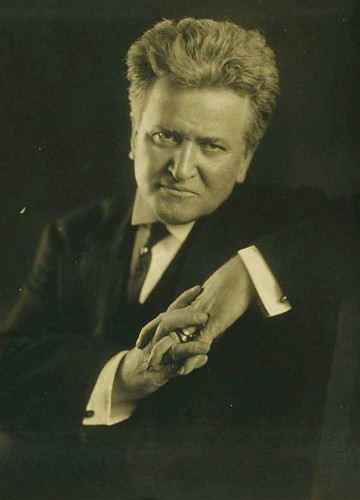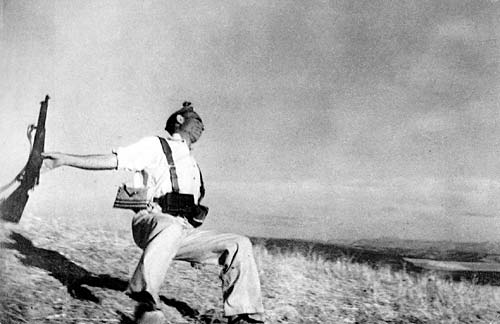
Since I posted on April 28 the article "Is There an Army Cover Up of the Rape and Murder of Women Soldiers," the deaths of two more U.S. Army women in Iraq and Afghanistan have been listed as suicides-the Sept. 28, 2007, death of 30-year-old Spc. Ciara Durkin and the Feb. 22, 2008, death of 25-year-old Spc. Keisha Morgan. Both "suicides" are disputed by the families of the women.
Since April 2008, five more U.S. military women have died in Iraq-three in noncombat-related incidents. Ninety-nine U.S., six British and one Ukrainian military women and 13 U.S. female civilians have been killed in Iraq, Kuwait and Bahrain, as well as probably hundreds of thousands of Iraqi women and girls. Of the 99 U.S. military women, 64 were in the Army active component, nine in the Army National Guard, seven in the Army Reserve, seven in the Marine Corps, nine in the Navy and three in the Air Force. According to the Department of Defense, 41 of the 99 U.S. military women who have been killed in Iraq died in "noncombat-related incidents." Of the 99 U.S. military women killed in the Iraq theater, 41 were women of color (21 African-Americans, 16 Latinas, three of Asian-Pacific descent and one Native American-data compiled from the Web site www.nooniefortin.com).
Fourteen U.S. military women, including five in the Army, one in the Army National Guard, two in the Army Reserves, three in the Air Force, two in the Navy (on ships supporting U.S. forces in Afghanistan) and one in the Marine Corps, one British military woman and six U.S. civilian women have been killed in Afghanistan. According to the Department of Defense, four U.S. military women in Afghanistan died in noncombat-related incidents, including one now classified as a suicide. Four military women of color (three African-Americans and one Latina) have been killed in Afghanistan. (Data compiled from www.nooniefortin.com.)
The deaths of 14 U.S. military (13 Army and one Navy) women and one British military woman who served in Iraq, Kuwait or Afghanistan have been classified as suicides.
Two Army women in Iraq (Pfc. Hannah Gunterman McKinney, a victim of vehicular homicide, and Pfc. Kamisha Block, who was shot five times by a fellow soldier who then killed himself) and two Navy women in Bahrain (MASN Anamarie Camacho and MASN Genesia Gresham, both shot by a male sailor who then shot, but did not kill, himself) have died at the hands of fellow military personnel.
Several more military women have died with unexplained "noncombat" gunshot wounds (U.S. Army Sgt. Melissa Valles, July 9, 2003: gunshot to the abdomen; Marine Lance Cpl. Juana Arellano, April 8, 2006: gunshot wound to the head while in a "defensive position"). Most of the deaths of women who have died of noncombat gunshot wounds have been classified as suicides, rather than homicides.
The Army, the only military service to release annual figures on suicides, reported that 115 soldiers committed suicide in 2007. According to Army figures, 32 soldiers committed suicide in Iraq and four in Afghanistan. Of the 115 Army suicides, 93 were in the Regular Army and 22 were in the Army National Guard or Reserves. The report lists five Army women as having committed suicide in 2007. Young, white, unmarried junior enlisted troops were the most likely to commit suicide, according to the report (Pauline Jelinek, "Soldier suicides hit highest rate, 115 last year," Associated Press, May 29, 2008, abcnews.go.com/Politics/wireStory?id=4955043).
From 2003 until August 2008, the deaths of 13 Army women and one Navy woman in Iraq and Afghanistan (including Kuwait and Bahrain) have been classified as suicides (numbers confirmed with various media sources):
2008-Spc. Keisha Morgan (Taji, Iraq)
2007-Spc. Ciara Durkin (Bagram, Afghanistan), Capt. (medical doctor) Roselle Hoffmaster (Kirkik, Iraq)
2006-Pfc. Tina Priest (Taji, Iraq), Pfc. Amy Duerkson (Taji, Iraq), Sgt. Denise Lannaman (Kuwait), Sgt. Jeannette Dunn (Taji, Iraq), Maj. Gloria Davis (Baghdad).
2005-Pvt. Lavena Johnson (Balad, Iraq), 1st Lt. Debra Banaszak (Kuwait), USN MA1 Jennifer Valdivia (Bahrain)
2004-Sgt. Gina Sparks (it is unclear where in Iraq she was injured, but she died in the Fort Polk, La., hospital)
2003-Spc. Alyssa Peterson (Tal Afar, Iraq), Sgt. Melissa Valles (Balad, Iraq)
The demographics of those Army women who allegedly committed suicide are as intriguing as the circumstances of their deaths:
-- Seven of the women, being between the ages of 30 and 47, were older than the norm (Davis, 47; Lannaman, 46; Dunn, 44; Banaszak, 35; Hoffmaster, 32; Sparks, 32; and Durkin, 30). (Most military suicides are in their 20s).
-- Three were officers: a major (Davis), a captain and medical doctor (Hoffmaster) and a first lieutenant (Banaszak).
-- Five were noncommissioned officers (Lannaman, Dunn, Sparks, Valles and Valdivia).
-- Five were women of color (Morgan, Davis, Johnson, Lannaman, Valles).
-- Four were from units based at Fort Hood, Texas, and were found dead at Camp Taji, Iraq (Dunn, Priest, Duerkson, and Morgan).
-- Two were found dead at Camp Taji, Iraq, 11 days apart (Priest and Duerkson).
-- Two were found dead at Balad, Iraq (Johnson and Valles).
-- Two had been raped (Priest, 11 days prior to her death; Duerksen, during basic training).
-- One other was probably raped (Johnson, the night she died).
-- Two were lesbians (Lannaman and Durkin).
-- Two of the women were allegedly involved in bribes or shakedowns of contractors (Lannaman and Davis).
-- Two had children (Davis and Banaszak).
-- Three had expressed concerns about improprieties or irregularities in their commands (Durkin's concerns were financial; Davis had given a seven-page deposition on contracting irregularities in Iraq the day before she died; Peterson was concerned about methods of interrogation of Iraqi prisoners).
-- Several had been in touch with their families within days of their deaths and had not expressed feelings of depression (Morgan, Durkin, Davis, Priest, Johnson).
The Death of Lavena Johnson
As discussed in my article "Is There an Army Cover Up of Rape and Murder of Women Soldiers?," 19-year-old Army Pvt. Lavena Johnson was found dead on the military base in Balad, Iraq, in July 2005, and her death was characterized by the Army as suicide from an M-16 rifle gunshot. From the day their daughter's body was returned to them, the parents, both of whom have had a long association with the Army-the father, a medical doctor, is an Army veteran and worked 25 years as a Department of the Army civilian and the mother, too, worked for the Department of the Army-harbored grave suspicions about the Army's investigation into Johnson's death and the Army's characterization of her death as suicide. As she had been in charge of a communications facility, Johnson was able to call home daily; in those calls, she gave no indication of emotional problems or being upset. In a letter to her parents after her death, Johnson's commanding officer, Capt. David Woods, wrote, "Lavena was clearly happy and seemed in very good health both physically and emotionally."
In viewing his daughter's body at the funeral home, Dr. John Johnson was concerned about the bruising on her face. He was puzzled by the discrepancy in the autopsy report on the location of the gunshot wound. As an Army veteran and a long-time Army civilian employee who had counseled veterans, he was mystified how the exit wound of an M-16 shot could be so small. The hole in Lavena's head appeared to be more the size of a pistol shot rather than an M-16 round. But the gluing of military uniform white gloves onto Lavena's hands, hiding burns on one of her hands, is what deepened Dr. Johnson's concerns that the Army's investigation into the death of his daughter was flawed.
Over the next two and a half years, Dr. and Mrs. Johnson and their family and friends, through the Freedom of Information Act and congressional offices, relentlessly and meticulously requested documents concerning Lavena's death from the Department of the Army. Gradually, with the Army's response to each request for information, another piece of evidence about Johnson's death emerged.
The military criminal investigator's initial drawing of the death scene revealed that Johnson's M16 was found perfectly parallel to her body. The investigator's sketch showed that her body was found inside a burning tent, under a wooden bench with an aerosol can nearby. A witness, an employee of the defense contractor Kellogg, Brown & Root (KBR), stated that he heard a gunshot and when he went to investigate, he found a KBR tent on fire. When he looked into the tent, he saw a body. The official Army investigation did not mention a fire, nor that Johnson's body had been pulled from the fire.
KBR Women Employees Raped in Iraq
The fact that Lavena Johnson's body was discovered in a KBR tent raises questions.
Many KBR women employees have been raped in Iraq. One law firm in Houston has 15 clients with sexual assault, sexual harassment or retaliation complaints against Halliburton and its former subsidiary Kellogg, Brown & Root LLC (KBR), as well as against the Cayman Island-based Service Employees International Inc., a KBR shell company (Karen Houppert, "Another KBR Rape Case," The Nation, April 3, 2008).
Two female employees of KBR who were raped while in Iraq have testified before Congress. On her fourth day in Iraq, July 28, 2005, Jamie Leigh Jones was gang-raped by seven fellow KBR employees at Camp Hope in Baghdad. Jones' rape occurred nine days after Lavena Johnson was found dead in a KBR tent at Balad Air Base. Jones was drugged, raped and beaten, and the injuries she suffered were so severe that she had to have reconstructive surgery on her chest ("Democracy Now," April 18, 2008, "Two Ex-KBR Employees Say They Were Raped by Co-Workers in Iraq," www.democracynow.org/2008/4/8/exclusivein_their_first_joint_interview_two).
Jones reportedly was taken back to the KBR area, where she was placed into an empty shipping container under KBR armed guard for almost 24 hours without food or water or the ability to communicate with anyone. The military doctor who examined her turned over the "rape kit" photographs and statement to KBR. Jones persuaded a guard to allow her a phone call, which she made to her father. Her father promptly called their Texas congressional representative, Ted Poe, who then called the State Department in Iraq and demanded her immediate release. Jones was rescued shortly thereafter and quickly left Iraq. Congressman Poe again contacted the State Department and the Department of Justice in an effort to launch an investigation, but both departments ignored the requests and even refused to contact Poe for the next two years. The "rape kit" and the photographs of and statement from Jones taken by a military doctor disappeared (ABC News, "KBR Employees: Company Covered Up Sexual Assault and Harassment," abcnews.go.com/Blotter/popup?id=3948132&contentIndex=1&start=false&page=1).
Jones testified Dec. 17, 2007, before the House Judiciary Committee on "Enforcement of Federal Criminal Law to Protect Americans Working for U.S. Contractors in Iraq" (judiciary.house.gov/hearings/hear_121907.html).
The nonprofit foundation Jones created after her ordeal, the Jamie Leigh Jones Foundation, has been contacted by 40 U.S. contractor employees alleging that they are the victims of sexual assault or sexual harassment on the job and that Halliburton, KBR and Service Employees International Inc. have not helped them or have obstructed their claims (Karen Houppert, "Another KBR Rape Case," The Nation, April 3, 2008).
Dawn Leamon was another civilian contractor employed by KBR who was raped allegedly by KBR employees. She was the sole medical provider at Camp Harper, a base near Basra in southern Iraq. Leamon reported being raped anally by a U.S. soldier in January 2008 while a KBR employee forced his penis into her mouth. She says she was told to keep quiet by her KBR supervisor and by the military liaison officer. Her laptop computer was seized within hours after she e-mailed a civilian lawyer. She testified on April 9, 2008, before the Senate Foreign Relations Committee in the hearing "Closing Legal Loopholes: Prosecuting Sexual Assaults and Other Violent Crimes Committed Overseas by American Civilians in a Combat Environment" (foreign.senate.gov/hearings/2008/hrg080409a.html).
Johnsons' Quest Continues in Daughter's Death
After two years of requesting documents, the family of Lavena Johnson received a set of papers from the Army that included a photocopy of a compact disk. Wondering why the copy was among the documents, Dr. Johnson requested the CD itself. The Army finally complied after a congressman intervened. When Dr. Johnson viewed the CD, he was shocked to see photographs taken by Army investigators of his daughter's body as it lay where her body had been found, as well as other photographs of her disrobed body taken during the investigation.
The photographs revealed that Lavena, barely five feet tall and weighing less than 100 pounds, had been struck in the face with a blunt instrument, perhaps a weapon stock. Her nose was broken and her teeth knocked backward. One elbow was distended. The back of her clothes contained debris, indicating she had been dragged. The photographs of her disrobed body showed bruises, scratch marks and teeth imprints on the upper part of her body. The right side of her back as well as her right hand had been burned, apparently from a flammable liquid poured on her and then lighted. Photographs of her genital area revealed massive bruising and lacerations. A corrosive liquid had been poured into her genital area, probably to destroy DNA evidence of sexual assault.
Despite the bruises, scratches, teeth imprints and burns on her body, Lavena was found completely dressed in the burning tent. There was a blood trail from outside the contractor's tent to inside the tent. She apparently had been dressed after the attack and her attacker had placed her body in the tent before setting it on fire.
Investigator records reveal that members of her unit said Johnson had told them she was going jogging with friends on the other side of the base. One unit member walked with her to the post exchange, where she bought a soda, and then, in her Army workout clothes, Johnson went on by herself to meet friends and to exercise. The unit member said she was in good spirits, showing no indication of personal emotional problems.
The Army investigators initially concluded that Pvt. Johnson's death was a homicide and indicated that on their paperwork. However, a decision apparently was made by higher officials that the investigators would stop the homicide inquiry and classify her death a suicide.
Three weeks later, a final autopsy report from the U.S. Armed Forces Institute of Pathology, dated Aug. 13, 2005, said the cause of death was an intraoral gunshot wound to the head and the manner of death was a suicide. However, the autopsy report-written after the July 22, 2005, autopsy at Dover Air Force Base and signed on Aug. 9, 2005 by associate medical examiner Lt. Cmdr. Edward Reedy and by chief deputy medical examiner Cmdr. James Caruso-states much more in its opinion section:
"The 19 year old female, Lavena Johnson, died as a result of a gunshot wound of the head that caused injuries to the skull and brain. The entrance wound was inside the mouth and injuries to the lips and oral mucosa were a direct result of the discharge of the weapon. The exit wound was located on the left side of the head. No bullet or bullet fragments were recovered. Toxicology was negative for alcohol and other screened drugs. The investigative information made available indicates that this was a self-inflicted gunshot wound. With the information surrounding the circumstances of the death that is presently available the manner of death is determined to be suicide."
The medical examiners revealed that they were basing their determination of suicide on "investigative information made available indicat[ing] that this was a self-inflicted gunshot wound," not from medical evidence. They did not address what caliber of bullet entered her body-in fact, they stated that no bullet or bullet fragment was recovered, and they did not offer comments on what caliber of bullet would have made the entry and exit wounds.
The Aug. 25, 2005, report from the U.S. Army Criminal Investigation Laboratory in Forest Park, Ga., stated:
The characteristic gunshot residue particle indicated on Exhibit 5 (Gunshot residue kit (Item 9, Doc 775-05), the number is considered insignificant. Based on these results, the report concludes that the following possibilities exist, but the report makes no conclusion:
a. The subject did not handle/discharge a firearm.
b. The subject handled/discharged a firearm but an insignificant number of gunshot residue particles were deposited on the hands.
c. The subject handled/discharged a firearm that deposited a significant number of gunshot residue particles on the hand; however, due to washing, wiping, or other activity, the particles were reduced to insignificant numbers.
The medical examiners who did the autopsy on Johnson's body did not mention any burns on her body, but when the family had gloves that had been glued onto her hands cut off by the funeral home employees in Missouri, they found her hands had been burned, and further examination showed her back was burned. A witness statement taken on July 19, 2005, states: "The witness [name redacted] ... found the victim under the bench and verified there were no signs of life ... related he saw the M16 lying across the victim's body ... he didn't know what setting the weapon was on ... he related everything was smoking, including parts of the body. He called for an ambulance and secured the scene."
On April 9, 2008, Johnson's parents flew from their home in St. Louis for meetings with members of Congress and their staff. They again went to Washington, D.C., in July 2008 and were briefed by Army investigators and the military medical examiner who conducted the autopsy on Lavena. The Army briefers maintained that her death was a suicide and were unable to answer Dr. John and Linda Johnson's long list of questions. The Johnsons are asking for a congressional hearing that would force the Army to further investigate their daughter's death.
Murder of Three Women in North Carolina
Some of the circumstances surrounding Lavena Johnson's death in Iraq three years ago are similar to those of other American servicewomen who died in recent months. In the six months from December 2007 to July 2008, three U.S. military women were killed by military males near the Army's Fort Bragg and the Marine Corps' Camp Lejeune, two mega-bases in North Carolina.
Two of the women were in the Army. Spc. Megan Touma was seven months pregnant when her body was found inside a Fayetteville hotel room June 21, 2008. A married male soldier whom she knew in Germany has since been arrested. The estranged Marine husband of Army 2nd Lt. Holley Wimunc has been arrested in her death and the burning of her body.
Marine Lance Cpl. Maria Lauterbach had been raped in May 2007 and protective orders had been issued against the alleged perpetrator, fellow Marine Cpl. Cesar Laurean. The burned body of Lauterbach and her unborn baby were found in a shallow grave in the backyard of Laurean's home in January 2008. Laurean fled to Mexico, where he was captured by Mexican authorities. He is currently awaiting extradition to the United States to stand trial. Lauterbach's mother testified before Congress on July 31, 2008, that the Marine Corps ignored warning signs that Laurean was a danger to her daughter (testimony of Mary Lauterbach to the National Security and Foreign Affairs Subcommittee of the Oversight and Government Reform Committee, nationalsecurity.oversight.house.gov/documents/20080731134039.pdf).
Two Women Sexually Assaulted Before Their Deaths
Remarkably, a rape test was not performed on the body of Lavena Johnson although bruising and lacerations in her genital area indicated assault.
Another family that does not believe their daughter committed suicide in Iraq is the family of Pfc. Tina Priest, 20, of Smithville, Texas, who was reported raped by a fellow soldier in February of 2006 on a military base known as Camp Taji. Priest was a part of the 5th Support Battalion, lst Brigade Combat Team, 4th Infantry Division from Fort Hood, Texas. The Army said Priest was found dead in her room on March 1, 2006, of a self-inflicted M-16 shot, 11 days after the rape. Priest's mother, Joy Priest, disputes the Army's findings.
Mrs. Priest said she talked several times with her daughter after the rape and that Tina, while very upset about the rape, was not suicidal. Mrs. Priest continues to challenge the Army's 800 pages of investigative documents with a simple question: How could her five-foot-tall daughter, with a correspondingly short arm length, have held the M-16 at the angle which would have resulted in the gunshot? The Army attempted several explanations, but each was debunked by Mrs. Priest and by the 800 pages of materials provided by the Army itself. The Army now says Tina used her toe to pull the trigger of the weapon that killed her. The Army reportedly never investigated Tina's death as a homicide, only as a suicide.
According to Tina's mother, rape charges against the soldier whose sperm was found on Tina's sleeping bag were dropped a few weeks after her death. He was convicted of failure to obey an order and sentenced to forfeiture of $714 for two months, 30 days' restriction to the base and 45 days of extra duty.
On May 11, 2006, 10 days after Tina Priest was found dead, 19-year-old Army Pfc. Amy Duerksen was found dead at the same Camp Taji. Duerksen died three days after she suffered what the Army called "a self-inflicted gunshot." The Army claimed that she, too, had committed suicide. In the room where her body was found, investigators reportedly discovered her diary open to a page on which she had written about being raped during training after unknowingly ingesting a date-rape drug. The person Duerkson identified in her diary as the rapist was charged by the Army with rape after her death. Many who knew her did not believe she shot herself, but there is no evidence of a homicide investigation by the Army.
Women Had Concerns About Job Irregularities
Three women whose deaths have been classified as suicides had expressed concerns about improprieties or irregularities in their military commands.
Army Spc. Ciara Durkin, 30, a Massachusetts National Guard payroll clerk, was found dead on Sept. 28, 2007, from a gunshot wound to the head. She had gotten off work 90 minutes earlier and was found lying near a chapel on Bagram Air Base in Afghanistan. Durkin had called her brother just hours before she died, leaving an upbeat happy birthday message on his telephone. In previous conversations, Durkin told her sister that she had discovered something in the finance unit that she did not agree with and that she had made some enemies over it. She told her sister to keep investigating her death if anything happened to her ("How did Specialist Ciara Durkin Die?" CBSNews, Oct. 4, 2007, cbsnews.com/stories/2007/10/04/world/main3328739.shtml). In June 2008, the Army declared her death a suicide.
Army interrogator Spc. Alyssa Renee Peterson, 27, assigned to C Company, 311th Military Intelligence Battalion, 101st Airborne Division, Fort Campbell, Ky., was an Arabic linguist who reportedly was very concerned about the manner in which interrogations of detained Iraqis were being conducted. She died on Sept. 15, 2003, near Tal Afar, Iraq, in what the Army described as a gunshot wound to the head, a noncombat, self-inflicted weapons discharge, or suicide. Peterson had reportedly objected to the interrogation techniques used on prisoners in Iraq and refused to participate after only two nights working in the unit known as "the cage." Members of her unit have refused to describe the specific interrogation techniques to which Peterson objected. The military says that all records of those techniques have now been destroyed. After refusing to conduct more interrogations, Peterson was assigned to guard the base gate, where she monitored Iraqi guards. She was also sent to suicide prevention training. Army investigators concluded she shot and killed herself with her service rifle on the night of Sept. 15, 2003. Family members challenge the Army's conclusion.
Maj. Gloria Davis, 47, an 18-year Army veteran, mother and grandmother, was found dead of a gunshot wound on Dec. 12, 2006, the day after she reportedly talked at length to an Army investigator about corruption in military contracting. She had been accused of accepting a $225,000 bribe from Lee Dynamics, a defense contractor that provided warehouse space for the storage of automatic weapons in Iraq (Eric Schmitt and James Glanz, "U.S. Says Company Bribes Officers for Work in Iraq," New York Times, Aug. 31, 2007).
Davis' mother, Annie Washington, told the author that military investigators have never located any of the $225,000 Davis is alleged to have taken. Washington said her daughter was right-handed and would have had a hard time holding the weapon in her left hand and shooting herself on the left side of her head (telephone conversation between Ann Wright and Annie Washington, July 2008).
Federal court documents show that the Army suspended Lee Dynamics from contracting on July 9, 2007, over allegations that the company paid hundreds of thousands of dollars to numerous U.S. officers in Iraq and Kuwait in 2004 and 2005 to get contracts to build, operate and maintain warehouses in Iraq where weapons, uniforms and vehicles for the Iraqi military were stored.
Reportedly included in the documents was a seven-page statement by an Army investigator who questioned Maj. Davis the day before she was found dead in her quarters. The deposition has apparently been used in ongoing federal cases on corruption in military contracting (Ed Blanche, "Kickbacks, Weapons and Suicide: The US Army's Battle With Corruption," March 15, 2008, kippreport.com/article.php?articleid=1056&page=1). The author attempted to obtain a copy of Davis' statement from the Department of Justice, but a DoJ public affairs officer said the statement is not yet in the public domain and intimated that it is being used in other ongoing DoJ investigations into contracting fraud (telephone conversation on July 28, 2008, with DoJ public affairs officer).
The Lee Dynamics warehouses were part of a circle of corruption involving military personnel and contractors throughout Iraq and the disappearance of 190,000 U.S.-supplied weapons- 110,000 AK-47 assault rifles and 80,000 pistols intended for Iraqi security forces for which the U.S. military cannot account. A July 2007 Government Accountability Office report said that until December 2005 the U.S.-Iraqi training command had no centralized records on weapons provided to Iraqi forces, and although 185,000 AK-47 rifles, 170,000 pistols, 215,000 sets of body armor and 140,000 steel helmets had been issued by September 2005, because of poor record keeping it was unclear what happened to 110,000 AK-47s and 80,000 pistols and more than half the armor and helmets (GAO Report 07-711, Stabilizing Iraq: DOD Cannot Ensure That U.S.-Funded Equipment Has Reached Iraqi Security Forces, July 2007, Pages 14 and 15, gao.gov/new.items/d07711.pdf).
In December 2007, the U.S. military acknowledged that it had lost track of an additional 12,000 weapons, including more than 800 machine guns (Ed Blanche, "Kickbacks, Weapons and Suicide: The US Army's Battle With Corruption," March 15, 2008, kippreport.com/article.php?articleid=1056&page=1).
In 2005, Col. Ted Westhusing, 44, at the time the highest-ranking officer to die in Iraq, allegedly committed suicide after reportedly becoming despondent about the poor performance of private contractors who were training Iraqi police, for which he was responsible. After graduating third in his West Point class and serving as the honor captain for the entire academy his senior year, Westhusing became one of the Army's leading scholars on military ethics and was a professor at West Point.
In January 2005 Westhusing began supervising the training of Iraqi forces to take over security duties from the U.S. military. He oversaw the Virginia-based USIS, a private security contractor, which had contracts worth $79 million to train a corps of Iraqi police to conduct special-operations missions. Westhusing was upset about allegations, in a four-page anonymous letter, that USIS deliberately shorted the Iraqi government on the number of trainers it provided in order to increase its profit margin. The letter also revealed two incidents in which USIS contractors allegedly had witnessed or participated in the killing of Iraqi civilians. After an angry counseling meeting with the contractor, Westhusing was found dead of a gunshot wound. Many of Westhusing's professional colleagues question the Army's ruling of suicide, despite the note found in his quarters. They point out that Westhusing did not have a bodyguard and was surrounded by the same contractors he suspected of wrongdoing. They also question why the USIS company manager who discovered Westhusing's body was not tested for gunpowder residue.
In the space of three months in 2006, three members of the U.S. Army who had been part of a contracting and logistics group in Kuwait and Iraq were accused of taking bribes from contractors and allegedly committed suicide. Two of them were women, Maj. Gloria Davis and Sgt. Denise Lannaman, and the third was Lt. Col. Marshall Gutierrez. In August 2006 Gutierrez was arrested at a restaurant in Kuwait and was accused of shaking down a laundry contractor for a $3,400 bribe. He was allowed to return to his quarters and was found dead on Sept. 4, 2006, with an empty bottle of prescription sleeping pills and an open container of what appeared to be antifreeze.
The second woman soldier who was allegedly involved with bribes and allegedly committed suicide was New York Army National Guard Sgt. Denise A. Lannaman. Lannaman, 46, had completed one tour in Tikrit, Iraq, in 2005. In December 2005 she decided to volunteer to stay in Iraq longer and took an assignment at a desk job at a procurement office in Camp Arifjan, Kuwait, that purchased millions of dollars in supplies. She received excellent performance ratings, and her supervisor said that her oversight eliminated misuse of funds by 36 percent. On Oct. 1, 2006, Lannaman was questioned by a senior officer about the death of Lt. Col. Gutierrez and was reportedly told by that officer that she was implicated in the contracting fraud and would be leaving the military in disgrace. She was found in a jeep dead of a gunshot later that day.
The Army has classified Lannaman's death as a suicide. A member of her family said that Lannaman had a history of psychiatric problems but somehow been allowed to enlist in the military. She had attempted suicide four times in her life, according to the family member. In September 2007, Army spokesman Lt. Col. William Wiggins told the family that Lannaman had not been the subject of any contract investigations, but he said he could not say whether Lannaman had been threatened by a superior officer with dismissal from the service (Jim Dwyer, "Letter from America: Journey from New York to Kuwait, and Suicide," New York Times, Sept. 19, 2007). Lannaman's family said that because of her pre-existing mental state, the threat that the superior officer made to send her home in disgrace could have caused her to take her life.
Soldiers Convicted of Bribery
In June 2008 four persons plead guilty in bribery and kickback scandals concerning military contracts in Iraq. On June 11, 2008, recently retired Army National Guard Col. Levonda Joey Selph, a key person on Gen. David Petraeus' team that was training and equipping Iraqi security forces in 2004 and 2005, pleaded guilty to bribery and conspiracy. She admitted disclosing to the owner of Lee Dynamics International confidential bidding information about a $12-million contract for building and operating U.S. military warehouses in Iraq that stored automatic weapons and other equipment. Lee Dynamics International is the same company that reportedly gave Maj. Davis a $225,000 bribe. Col. Selph helped the company owner, a former Army pay clerk, to submit "fake bid packages on behalf of six companies he controlled to create a false sense of competition," for which she was given a trailer valued at $20,000; she eventually returned the trailer, and the contractor then gave her $4,000 in cash and paid for air fare and accommodations for a trip to Thailand in October 2005, valued at about $5,000. Selph has since agreed to pay the U.S. government $9,000 and could serve a prison sentence of up to two years (Eric Schmitt, "Guilty Plea Given in Iraq Contract Fraud," New York Times, June 11, 2008).
After having been in military custody since July 2007, Army Maj. John Cockerham, 43, pleaded guilty last January to bribery, conspiracy and money laundering in awarding illegal contracts for supplies such as bottled water. He had received more than $9 million in bribes from at least eight defense contractor companies, and records found in his home indicated he expected to get $5.4 million more. Melissa Cockerham, Cockerham's wife, also pleaded guilty to money laundering. Their plea bargains were kept under federal court seal until June 25, 2008, while they cooperated with investigators. Cockerham faces up to 40 years in prison, while his wife could face up to 20 years in prison (Dana Hedgpeth, "2 Plead Guilty to Army Bribery Scheme," Washington Post, June 25, 2008).
The Death of Spc. Keisha Morgan
Army Spc. Keisha Morgan, 25, was on her second tour in Iraq. Just days before her February 22, 2008, death, she called her mother, Diana Morgan, and happily told her that she had reenlisted. Her mother said that Keisha wanted to be a nurse and planned to fulfill that ambition after she got out of the Army. Assigned to the Fourth Infantry Division, Fort Hood, Texas, Keisha reportedly suffered two seizures in her barracks at Camp Taji and died in a military hospital in Bagdad. The Army reportedly told Keisha's mother that Keisha was on antidepressants and may have overdosed. In a blog, Keisha's mother said her daughter had never mentioned being on antidepressants.
However, the Army reportedly frequently prescribes antidepressants to soldiers with anxiety from effects of war, and one of the known side effects of some of the depressants is seizures. The Army's fifth Mental Health Advisory Team report indicates that, according to an anonymous survey of U.S. troops taken in the fall of 2007, about 12 percent of combat troops in Iraq and 17 percent of those in Afghanistan are taking prescription antidepressants (such as Prozac and Zoloft) or sleeping pills (such as Ambien) to help them cope, with about 50 percent taking antidepressants and 50 percent taking prescription sleeping pills. In 2007, the U.S. Food and Drug Administration expanded the warning on antidepressants that the drugs may increase the risk of suicide in children and young adults ages 18 to 24, the age group most taking prescribed drugs in the Army. The Army should question whether there is a link between the increased use of the drugs by military troops in Iraq and Afghanistan and the rising suicide rate, which is now double the Army's suicide rate in 2001.
Deception or Just Incompetence?
It's now well known that there was deception by the U.S. military in the friendly fire death of Pat Tillman and the decision to make a heroic character out of Pvt. Jessica Lynch (oversight.house.gov/documents/20080714111050.pdf). But there are many other cases of deception and of misinformation given to families.
After much pressure from the families for more information on the deaths of their sons in 2004, the parents of Army Spc. Patrick McCaffery and 1st Lt. Andre Tyson were finally told by the Army two years after the death of their sons that they were not killed by insurgents but by Iraqi army recruits with whom they were training and patrolling (democracynow.org/2006/6/23/army_lies_to_mother_of_slain).
The parents of Spc. Jesse Buryj were initially told their son died in an accident. After relentless pressure on the Army for a copy of the autopsy, his mother read that Buryj had died of a gunshot wound. She had to request through the Freedom of Information Act a copy of the incident report, which states he was killed by friendly fire from coalition Polish troops. And later a soldier from Buryj's unit came to her home and told her he had been killed by "one of our own troops" (democracynow.org/2006/3/15/sunshine_week_newspapers_and_broadcasters_challenge).
Karen Meredith had to request the report on the May 30, 2004, death of her son, 1st Lt. Ken Ballard, through the Freedom of Information Act. Ballard did not die in a firefight with insurgents as she was originally told (arlingtoncemetery.net/kmballard.htm). He actually died in an accident when a branch fell on a tank in which he was riding and set off an unmanned gun (mydd.com/story/2005/9/12/14492/7912).
On Sept. 9, 2005, Meredith met with an Army colonel in the Pentagon and received a letter of apology from the Army for its misinformation on her son's death. On Sept. 27, 2005, she met with Secretary of the Army Francis Harvey and asked him to promise that soldiers' families would promptly be told the truth about casualties.
As the Beaumont, Texas, newspaper the Enterprise stated in its June 20, 2008, editorial, "There is no excuse for the U.S. Army's shabby treatment of Kamisha Block's parents and others who cared for her. Her commanders knew right away that she had been killed by a fellow soldier in Iraq, who had been harassing her. It was a standard murder-suicide. Incredibly, the Army first told her parents that it was an accidental death due to friendly fire."
A few days later, the Army changed its story and told the parents of Spc. Block that their daughter had been murdered by a shot to the chest. At the funeral home in Vidor, Texas, Block's mother noticed her daughter had a wound to her head, not mentioned by the Army.
Six months later, after numerous phone calls to the Army and enlisting help from Congressman Kevin Brady, Block's family was told by the Army that she had been murdered by a fellow soldier in her unit, a man who had physically assaulted her three times. His unit had disciplined him once but kept him in the same unit where he assaulted Block two other times before he murdered her by firing five shots into her and then killing himself in the same barracks room. After many attempts, the parents finally received a 1,200-page investigation that gave the name of the murderer.
Our Soldiers' Families Deserve Better
The families of slain soldiers deserve the truth about how they served and how they died. A professional military should handle each case with utmost care and concern. Tragically, in the past seven years, too many families have been faced with unanswered questions and a military bureaucracy that closes ranks against those who are trying to find answers.
I appeal to those in our military who know how these women died to come forward. Hopefully, the House Armed Services Military Personnel Subcommittee, chaired by Rep. Susan Davis, (202) 225-2040, will hold hearings on military suicides in the next two months and provide protection from retaliation for those willing to testify.













